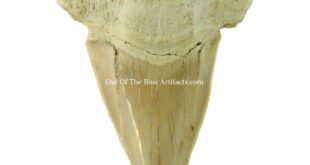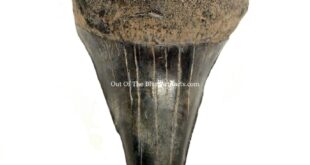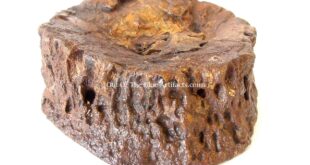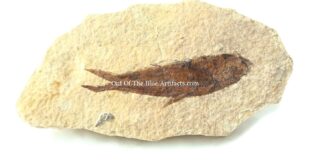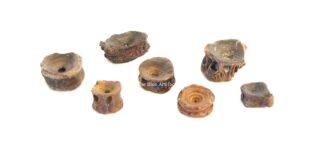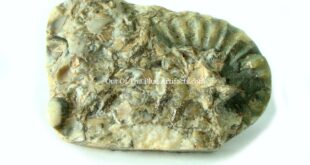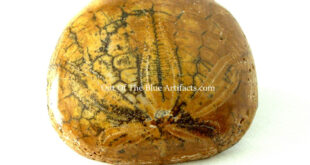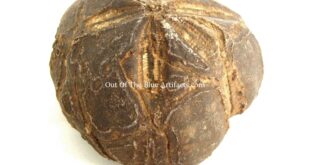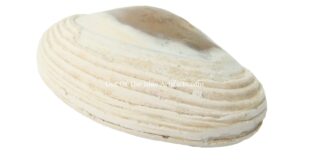Megalodon Tooth. Megalodon Tooth. The Megalodon was a very large shark like creature believed to be one of the largest and most powerful predators in vertebrate history. Fossil remains suggest that the Megalodon was about 20 metres (60′ feet) in length. The image (left) shows the back of the tooth. Fossil size 3″ x 2 1/2″ inches. The Miocene Period …
Read More »Fossils
Prehistoric Sharks Tooth
Sharks Tooth. Sharks Tooth – Otodus Species. The image (left) shows the back of the tooth. Fossil size 2 1/2″ x 2″. The Paliocene Period – 30 to 20 million years ago.
Read More »Carcharodon Tooth
Carcharodon Tooth. Carcharodon Tooth. The Carcharodon was related to the Megalodon but slightly smaller. The image (left) shows the back of the tooth. The Eocene Period – 50 million years ago to the Pliocene Period – 5 million years ago.
Read More »Plesiosaurus Vertebra
Plesiosaurus Vertebra. Plesiosaurus Vertebra. The Plesiosaurus was a marine reptile, they grew to about 12 metres (38 feet) in length. Fossil size 5″ x 2″ inches. The image (left) shows the size comparison between the large Plesiosaur Vertebra and the Prehistoric Fish Vertebra, shows how massive the Plesiosaur was! The Triassic Period – 250 million years ago.
Read More »Prehistoric Fish Fossil – Knightia
Prehistoric Fish Fossil – Knightia. The Knightia genus is an extinct boney fish related to the Herring and Sardine. Also seen on the bottom left of the matrix is a small piece of Coprolite (fossilised fish/animal poo) Size of matrix 6″ x 3″ inches. The Eocene Period – 50 million years ago.
Read More »Prehistoric Fish Vertebra
Prehistoric Fish Vertebra. Prehistoric Fish Vertebra. A selection of. These vertebrae are from a large sized prehistoric fish, which would have been about 4 – 5 foot in length. Fossil size 1/2″ x 1/4″ inch. Dates unknown.
Read More »Sea Bed Mortality Slab
Sea Bed Mortality Slab. A Sea Bed Mortality Slab (the featured image above) shows the surface of the slab and the vast numbers of compacted shells, also seen is an Ammonite top right). The image (left) shows the underside (cut and polished) showing the various shells. This portion of a slab is made up of hundreds of Snails, Clams and Ammonites. At one …
Read More »Linthia Sea Urchin
Linthia Sea Urchin. Linthia Sea Urchin (the featured image above) shows the top surface of the Urchin. Fossil size 1 1/2″ x 1 1/2″ inches. The Palaeocene Period – 70 million years ago.
Read More »Micraster Sea Urchin
Micraster Sea Urchin. Micraster Sea Urchin (the featured image above) shows the top surface of the Micraster. The image (left) shows the underside that was attached to the sea-bed. Fossil size 2 1/2″ x 2 1/2″ inches. The Cretaceous Period – 150 million years ago to recent.
Read More »Bivalve Clam Shell
Bivalve Clam Shell. Bivalve Clam Shell. This Clam Shell has been fossilised by Permineralisation. Fossil size 2″ x 1 1/4″ inches. The Triassic Period – 250 million years ago to recent.
Read More » Out Of The Blue Artifacts A Library of a lifetime of collecting
Out Of The Blue Artifacts A Library of a lifetime of collecting

